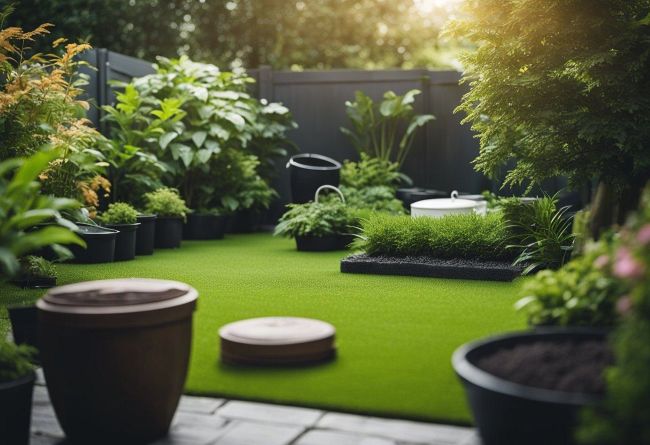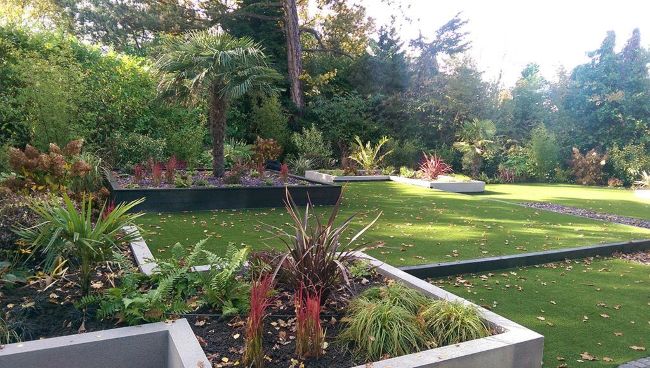How to Minimise the Environmental Impact of Laying an Artificial Grass Lawn in Your Garden
So, you’re thinking about laying artificial grass? Maybe you’re fed up with your muddy lawn that turns into a swamp every time it rains. Or perhaps the dog’s relentless digging has left your garden looking like a battlefield. Fair enough – after all natural grass can be a nightmare to maintain. But now a little bit of thought and care at this point, can definitely lessen the effects your decision can have on the environment.

Artificial grass is, at its core, plastic. And we all know plastic isn’t exactly Mother Nature’s best friend. But if you’re set on it, at least go for a version that’s a bit kinder to the planet. Some artificial grass suppliers are now using recycled plastics to create artificial turf. It’s still plastic, but at least it’s had a past life as something else. And when your lawn eventually wears out, make sure it’s recyclable—otherwise, it’s just another pile of waste heading straight for landfill. Avoid grass that contains harmful chemicals too; some are packed with heavy metals, and that’s the last thing you want lurking in your garden.
When it comes to the base, steer well clear of concrete. It might seem like a solid, practical choice, but it messes up natural drainage and can cause flooding. Instead, opt for crushed stone or gravel, which lets rainwater seep back into the soil. If you can get your hands on recycled aggregates, even better—less waste, lower environmental impact.
Now, about that weed membrane. Most people slap down a sheet of plastic to stop weeds poking through, but that also stops beneficial insects and microorganisms from doing their job in the soil. Compacted sand works just as well and won’t suffocate the ground. If you must use a membrane, look for biodegradable options that break down over time instead of sticking around forever.
You don’t have to turn your whole garden into a plastic carpet. Less is definitely more. Keeping even a small patch of real grass can make a big difference for biodiversity. Adding some flower beds with native plants will attract pollinators and soften the look of your garden. And if you mix things up with gravel paths, decking, or even a wildflower meadow, you’ll keep your space interesting while also making it more wildlife-friendly.
Eventually, your artificial lawn will wear out. When that day comes, don’t just chuck it in the bin. Some companies offer recycling schemes where they’ll take your old turf and turn it into something new. If that’s not an option, try repurposing it—it makes great paths for allotments, pet areas, or even a lining for your shed floor. Whatever you do, check your local council’s recycling guidelines to avoid unnecessary landfill waste.
Even though artificial grass isn’t the most nature-friendly option, you can still make your garden a haven for wildlife. Planting wildflowers around the edges will bring in bees and butterflies. A small pond or birdbath will attract birds and frogs. And if you’ve got a spare corner, why not build a bug hotel? A few logs and twigs can make a perfect home for beneficial insects that would otherwise struggle in an artificial landscape.

Installation plays a big role in your lawn’s environmental impact too. Avoid using excessive amounts of adhesive, as many contain chemicals that aren’t great for the environment. Where possible, use sand infill or mechanical fixings instead. Try to buy from local suppliers to cut down on transport emissions. And when your artificial grass arrives wrapped in layers of plastic packaging, make sure to recycle what you can.
Looking after your artificial lawn properly will extend its lifespan, reducing the need for replacements and, ultimately, waste. Brushing it regularly keeps the fibres upright and stops it looking flat. Cleaning spills with biodegradable soap and water instead of harsh chemicals will keep it in good shape without harming your garden’s ecosystem. If a section gets damaged, repair it rather than replacing the whole thing.
If you’re still unsure about artificial grass, there are plenty of natural alternatives that are just as easy to maintain. Clover lawns stay green all year round, require hardly any mowing, and attract pollinators. Wildflower meadows are low effort, high reward, and look stunning in summer. And if your garden is shaded, a moss lawn is a fantastic alternative that needs zero mowing and feels soft underfoot.
At the end of the day, artificial grass isn’t the most eco-friendly choice, but if you’re set on it, there are definitely real tangible ways to lessen its impact. Choose sustainable materials, install it responsibly, and think about how it fits into the bigger picture of your garden’s ecosystem. Also, leave some room for nature to do its thing, and help blend the edges of your manmade lawn into the natural surrounding borders. A bit of balance goes a long way – it’s obviously your garden, so your rules, but why not keep it as green (in every sense) as possible.


